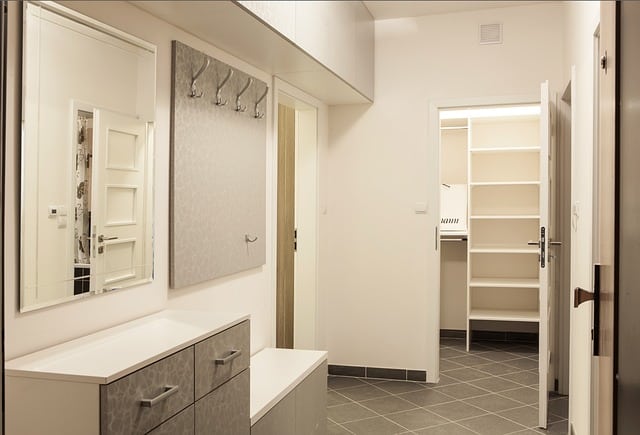In today’s fast-paced corporate world, keeping an organized and efficient workspace is critical for productivity and success. A filing cabinet is an essential tool that adds to a well-organized workspace. Filing cabinets organize your paperwork and files, offering protection and simple access to critical information.
This article will look at three types of filing cabinets that are ideal for your office.

Table of Contents
1. Standard Vertical Filing Cabinets
Traditional vertical filing cabinets are the standard choice for many offices. These cabinets have a vertical orientation and a compact design that allows them to fit neatly into any workspace. They include several drawers that provide plenty of storage for files and paperwork. Most vertical filing cabinets include locking features to protect sensitive information. Advantages include:
Space-saving Solution
Because of their compact vertical orientation, these cabinets may fit neatly into various workplace locations, including tight corners and smaller rooms. Upright file cabinets have a smaller footprint than lateral filing cabinets, making them appropriate for companies with limited floor space. These cabinets assist in maximizing available square footage by effectively utilizing vertical space, allowing for better overall workplace organization and utilization.
Easy Organization and Access to Files
Because of the vertical orientation, files can be placed front-to-back, making it easier to search and locate specific folders visually. With many drawers, these cabinets provide considerable file storage capacity, allowing for systematic categorization and separation.
Furthermore, many vertical filing cabinets have features such as file labels or index tabs, allowing even more organization and ease of file retrieval. This streamlined organization approach saves employees time because they can easily access the relevant documents without rummaging through heaps of papers or files.
Also Read: Top 7 Benefits of Work-From-Home Setting
2. White Lateral File Cabinet
A white lateral file cabinet provides a unique method to file storage. They have more storage capacity than vertical cabinets due to their horizontal orientation and oversized drawers. These cabinets are built to last in a busy office, with solid construction and long-lasting materials.
Its advantages include:
Ample Storage Capacity
These cabinets have wider drawers than vertical ones, providing more file and document storage. Because of their horizontal position, lateral cabinets may hold letter and legal-sized documents, making them useful for various file kinds. This additional storage capacity assists offices with a significant volume of papers in remaining organized and quickly accessing vital records when required.
Easy Access and Organization
The horizontal orientation allows users to discover and retrieve files without bending or reaching swiftly. This accessibility improves workflow productivity since employees can quickly find the necessary information.
Furthermore, white lateral file cabinets frequently include features such as labeling systems or file dividers, allowing more effective file management and categorization. This aids in maintaining a structured file system, lowering the likelihood of misplaced or lost documents.
3. Mobile Filing Cabinets
Traditional vertical filing cabinets are the standard choice for many offices. These cabinets have a vertical orientation and a compact design that allows them to fit neatly into any workspace. They include several drawers that provide plenty of storage for files and paperwork. Most vertical filing cabinets include locking features to protect sensitive information.
Advantages include the following:
Flexibility and Versatility
These cabinets are built for mobility, using wheels or casters for easy movement and relocation inside the office space. This adaptability allows offices to reorganize and alter their workspace as needed.
Mobile filing cabinets can be easily relocated to meet changes such as creating collaborative work areas, rearranging office furniture, or optimizing space usage. This makes them especially beneficial in fast-paced work environments or offices requiring constant restructuring.
Convenient Access to Files Anywhere
These cabinets’ portable design allows them to be readily rolled or moved to different regions, providing personnel with quick and accessible access to required documents. Employees no longer need to travel to a centralized filing area, saving time and enhancing productivity.
Mobile filing cabinets are especially useful in shared workspaces or collaborative environments where numerous people may need access to files simultaneously. Mobile cabinets improve workflow efficiency and allow seamless collaboration by bringing files straight to where they are required.
Also Read: A Guide to Preparing Your Child’s Bedroom for Their Teenage Years
In Conclusion
Choosing the right filing cabinet for your office is critical for organizing your workspace. The three types of file cabinets mentioned in this article, including traditional vertical filing cabinets, lateral filing cabinets, and mobile filing cabinets, each provide distinct benefits to meet the demands of different offices.
Consider available space, file volume, and workplace layout when deciding on a filing cabinet. Investing in a suitable filing cabinet can improve office organization, increase efficiency, and secure essential documents.
A well-organized office is a productive office. So, take the time to investigate your options and make an informed selection. Your filing cabinet will be a helpful asset in establishing a more streamlined and effective work atmosphere and a storage option.

Leave a Reply